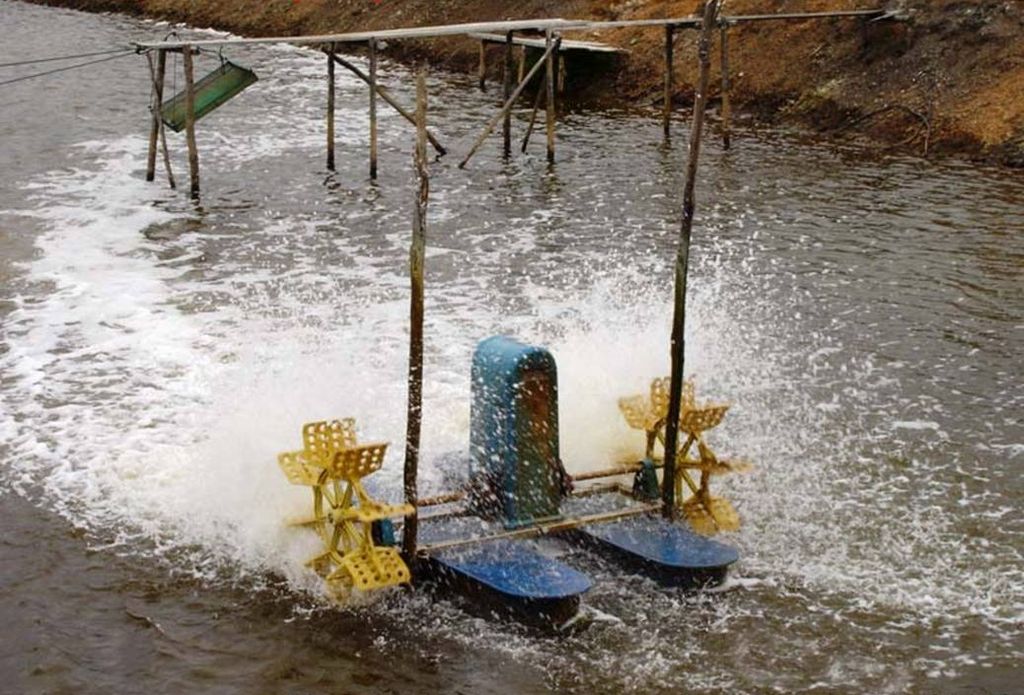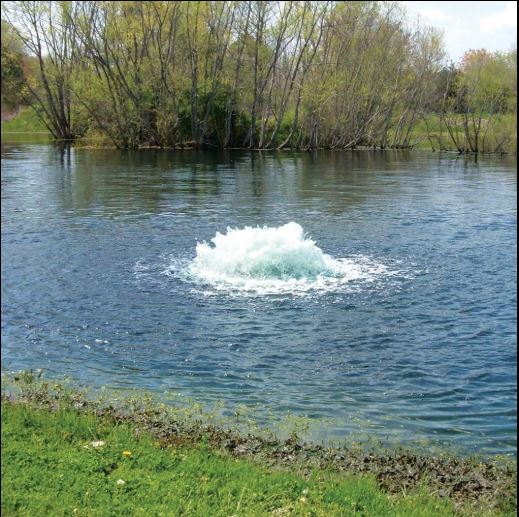Please join Idalmiro Manuel da Rosa from the City of San Diego and the guests
below to discuss the Hypolimnetic Oxygenation System for Lake Hodges (you know folks, we could call it 'Hodges Reservoir' but take it from a man with a Masters Degree in marketing...'Lake' is much sexier than 'reservoir' especially when it comes to promoting the charm and romance of a community;). The good news is that construction on this elaborate and expensive HO system begins this year.
The 7-person panel includes, none other than:
-Dr. Sarah Brower - City of San Diego, Public Utilities LongRange Planning.
-Brian Vitelle, P.E. - City of San Diego, Public Works Project Manager
-Stephen Lindsay, P.E. - City of San Diego, Public Works Construction Manager
-Megan Hickey - City of San Diego, Public Works - Engineering, Associate Planner
-Michael Kenny - City of San Diego, Consultant Construction Manager
-Jared Bell - Ballard Marine Construction
Via 'deep water aeration' or hypolimnetic aeration, the oxygen demand of deep water is covered by oxygen from the atmosphere without destroying the lake’s natural stratification. Thus the deep water becomes aerobic, the phosphate dissolution is reduced significantly and the mineralization of sediments improves. Years of scientific evidence show that it is possible to keep the deep water aerobic all year round via technical ventilation measures and thereby to recover the natural balance of lakes effectively.
So how does all of this science happen...with technology and hardware...
At the lower end of the plant atmospheric air is inserted into the water by an ejector. A mixture of water and oxygen is forced upwards in the upstream pipe. At the end of the upstream pipe the mixture flows into the degassing chamber. Residual gases are separated from the oxygenated water. The gas escapes into the atmosphere, the oxygenated water flows back through the downstream pipe. The outlet provides a laminar flow and a horizontal outflow into the hypolimnion. Thanks to the flow and mass transfer calculations which are performed in the context of the technical configuration, the optimal set-up can be determined.
- Floating tanks
- Upstream pipe (Telescope)
- Degassing chamber
- Mixing device
- Suction fence
- Covering fence
- Downstream pipe
- Oxygen input
- Submersible pump with ejector
- Main ballast tanks
The objectives for water body restoration or aquatic therapy can vary, depending on the priority. Therefore, the possibilities of deep water aeration systems as TIBEAN are diverse:
Conservation of deep zones as aerobic habitat for fish and other higher organisms.[5][6]
Reduction of nutrient concentration in surface waters.[1]
Prevention of sludge formation, increased ammonium production and the formation of toxic hydrogen sulfide.[1]
Cost reduction for drinking water production.[1]
Targeted treatment of deep water with coagulants.
Drinking water production in water reservoir dams
Especially in respect of drinking water production, deep-water aeration allows a significant reduction of production costs and facilitates further technical treatment of the hypolimnic water.[1] Since water for drinking water production is drawn from below the thermocline in most reservoirs, an improved hypolimnic water quality has direct influence on the production of drinking water. With regard to the applicable limiting values of drinking water regulations, the following effects can be achieved via deep-water aeration:
pH and corrosion
For the pH of drinking water, the threshold value is 6.5 - 9.5. pH values outside the neutral range (pH 6.5 - 7.5) are principally critical, since they provide an indication of the corrosion behaviour of water. Slightly acidic water (pH 4 - 6.5) usually corrodes galvanized iron pipes, but also copper and asbestos cement pipes.[7] This process is known as acid corrosion. Practical experience has shown that the use of unprotected steel pipes is only possible at neutral pH values. By lower pH values, the removal of the pure zinc layer is promoted.[8] As a result of the dissolved salts and gases, natural cold waters usually show a slightly alkaline reaction. These properties are created by setting the equilibrium concentrations of dissolved carbon dioxide in the form of bicarbonate ions and carbonate ions. Higher alkaline pH values (pH 9 - 14) in the presence of oxygen as an oxidant lead to so-called oxygen corrosion. To avoid the described acid or oxygen corrosion, buffer solutions are added to the raw water for drinking water production. By the pH-stabilizing effect of hypolimnetic aeration, the application of these buffer solutions can be reduced, thus reducing operating costs.[1]
Iron and manganese
For concentrations of iron and manganese in drinking water, the threshold values are 200 µg/l and 50 µg/l respectively. Although they serve as essential trace elements in drinking water, slightly elevated iron and manganese concentrations are undesirable from a technical and hygienic point of view.[7] At low oxygen concentrations, iron and manganese are dissolved as ions. The naturally occurring iron and manganese is mainly present as divalent, soluble ferrous/ manganous compound. At very high concentrations, a yellow water colour is noticeable. When this water is aerated, the oxidization creates ferric iron/ manganese, with iron forming red-brown and manganese forming black precipitates. These precipitates cause staining and turbidity of the water and lead to laundry stains. The precipitates can also narrow pipes and deposit on mountings. Iron levels above 0.3 mg/l and manganese levels above 0.5 mg/l become noticeable as an unpleasant metallic taste.[7] Providing an aerobic hypolimnic environment, deep-water aeration oxidizes and precipitates dissolved iron and manganese compounds, before the water is treated in a suitable facility for drinking water production. In this way further operating costs for the removal of dissolved iron and manganese compounds can be realized.
The amount and mobility of iron species also influences the redox-controlled phosphorus household.[9] Divalent iron compounds successively diffusing from anaerobic sediment layers are oxidized at the boundary zone between aerobic water and anaerobic sediment, and accumulate at the top sediment layer. The stronger this accumulation, the more effective the aerobic boundary between sediment and water can act as a diffusion barrier for phosphate.[1]
Nutrient concentrations and sludge formation
As already mentioned, the deep-water aeration can reduce nutrient concentrations significantly. Aerobic conditions promote nitrification and subsequent denitrification thus contributing to nitrogen discharge of the system.[1] The chemical and microbial oxidation of reduced substances such as hydrogen sulfide and methane as well as the intensified degradation of organic matter can reduce the sludge formation. Aerobic conditions in the deep-water are also an important factor to decrease the redox-controlled redissolution of phosphorus from the sediment and to allow reprecipitation of released phosphorus. In this way the deep-water aeration additionally reduces costs for drinking water production by waiving denitrification stages or reducing the use of costly flocculants.[1]
Planning and design
The final design of plants is carried out in different phases. The first step should always be a morphometric measurement of the water body in order to assess the depth profile and the associated requirements for the technical design, and later on to determine the optimal location of the plant. The exact technical design requires the evaluation of various measurements of parameters such as nutrient concentrations, temperature stratification, pH, temporal variations of oxygen concentrations as well as calculations of flow rates, mass transport quantities and distribution of suspended solids in the hypolymnion.
Typical water aeration in Escondido, California is often required in water bodies like Lake Hodges that suffer from hypoxic or anoxic conditions, often caused by upstream human activities such as agricultural run-off, or over-baiting a fishing lake. Aeration can be achieved through the infusion of air into the bottom of the lake or by surface agitation from a fountain or spray-like device to allow for oxygen exchange at the surface and the release of gasses such as carbon dioxide, methane or hydrogen sulfide.
Dissolved oxygen (DO) is a major contributor to water quality. Not only do fish and most other aquatic animals need it, but aerobic bacteria help decompose organic matter. When oxygen concentrations become low, anoxic conditions may develop which can decrease the ability of the water body to support life.
A good example of a local aeration device is Lake San Marcos which uses this type of fountain aeration device:
Simpler aeration devices include this paddle wheel design:



 RSS Feed
RSS Feed
